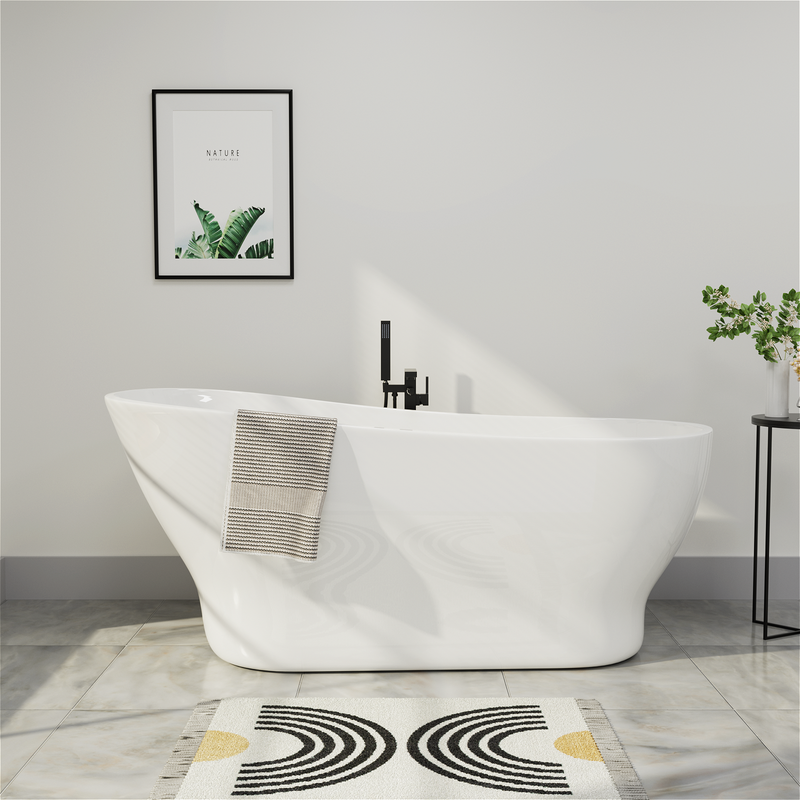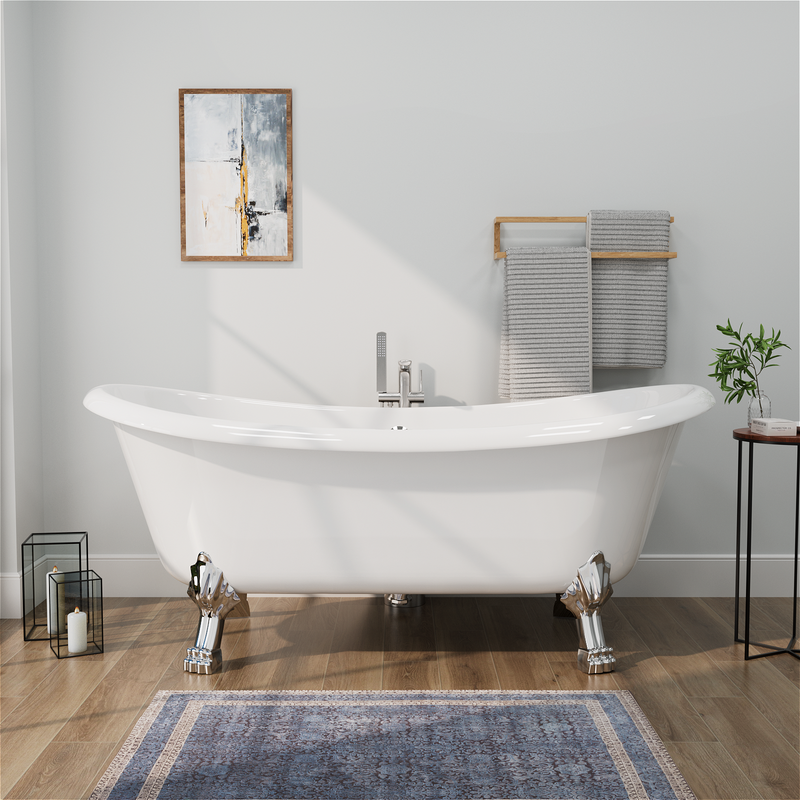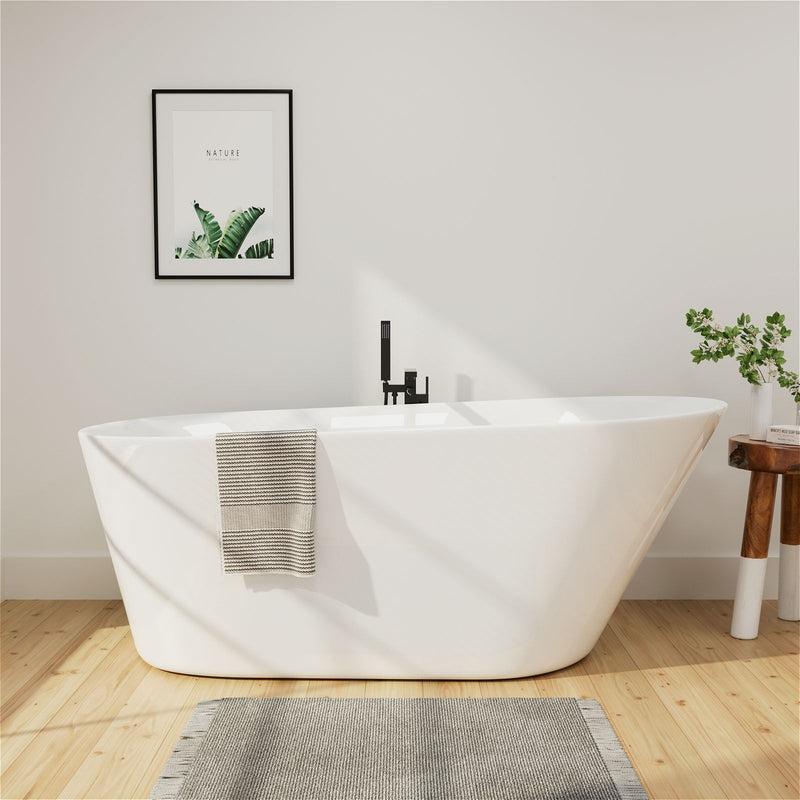Installing a corner shower pan can transform a bathroom, maximizing space and creating a sleek, modern look. However, the process is notoriously tricky, and the margin for error is slim. Unlike standard rectangular pans, a corner shower pan, often called an alcove or neo-angle pan, interfaces with two walls simultaneously, making precise measurement and cutting absolutely critical. A mistake of even a quarter-inch can lead to an improper fit, failed waterproofing, leaks, and costly damage to the subfloor and surrounding walls. This often results in the frustrating and expensive need to order a replacement unit and start over. This guide is designed to walk you through the entire process, from unboxing to final dry-fit, with a laser focus on the precise measuring and cutting techniques required for a perfect fit. We will cover the essential tools, the philosophy of double-checking every dimension, and the best practices for making clean, accurate cuts on various shower pan materials. By following these steps meticulously, you can avoid the common pitfalls and ensure your corner shower pan installation is watertight, secure, and built to last.

Foundation and Preparation - The Key to Success
The work you do before you even pick up a tape measure is what separates a professional-looking job from a problematic one.
Unboxing, Inspection, and Workspace Setup
Your first step is to carefully remove the shower pan from its packaging. Do not use a sharp knife that could scratch or gouge the surface; instead, carefully cut the cardboard and remove any foam or packing material. Once extracted, place the pan on a stable, flat, and protected surface. A pair of sawhorses with a sheet of plywood on top is an ideal workbench. This elevates the pan to a comfortable working height and protects its surface from scratches. Thoroughly inspect the pan for any shipping damage—cracks, deep scratches, or deformities. It is much easier to deal with a manufacturer's warranty claim now than to discover a crack after it's installed. Finally, familiarize yourself with the pan's design. Identify the flange edges that will meet the walls and locate the drain hole. Ensure you have the manufacturer's template if one was provided, but remember, it is always best to verify its dimensions directly on the pan and in your actual shower space.
Gathering the Right Tools for Precision
Attempting this job with inadequate tools is a recipe for failure. Using the wrong blade can crack a solid surface pan, and a dull pencil will lead to inaccurate lines. Essential tools for this project include a high-quality tape measure (a 25-foot metal one is ideal), a fine-toothed pencil for marking, a permanent marker for final cut lines, a combination square or speed square for ensuring perfect 90-degree angles, and a level. For the cutting itself, you will need a variable speed jigsaw equipped with the correct blade: a bi-metal blade with fine teeth for acrylic or fiberglass pans, or a diamond-grit blade for solid surface or stone resin pans. A rotary tool can be invaluable for notching out small sections for pipes or making fine adjustments. Always wear appropriate safety gear, including safety glasses to protect your eyes from plastic shards and dust, and work gloves to protect your hands.
The Art of Precise Measurement
This is the most critical phase. The old adage "measure twice, cut once" should be your mantra, and in this case, it should be "measure thrice, confirm, and then cut."

Establishing a Reliable Reference Point
Do not assume your bathroom walls are perfectly square or plumb. In fact, you should assume they are not. Your first task is to find the true corner of your shower space. Using your level, check the vertical plumb of both walls that will form the corner. Next, use your combination square or a carpenter's square to check the actual angle of the corner. While it is designed to be 90 degrees, it may be slightly more or less. Mark a reference point on each wall, approximately at the height where the top of the shower pan flange will sit. Measure out from the corner along each wall to this point. These marks will serve as your baseline for all subsequent measurements, allowing you to transfer the true dimensions of your shower space onto the pan itself, accounting for any wall imperfections.
Transferring Dimensions and Creating a Template
The most reliable method for ensuring accuracy is to create a physical template. While a paper template is sometimes provided, creating your own is more accurate. Place strips of wide masking tape directly onto the top ledge of the shower pan where it will meet the walls. This provides a smooth, markable surface and prevents you from scratching the pan. Using your measurements from the walls, carefully mark the outline of your shower space onto the tape. Use your square to ensure your lines are perfectly perpendicular. For critical areas, especially where the pan will meet the corner, double-check your measurements from multiple points. Another highly effective technique is to create a story pole. Take a straight, narrow piece of wood or stiff cardboard. Hold it against the wall, mark the critical distances (like the distance from the corner to the end of a wall obstruction), and then transfer those exact marks directly onto the taped shower pan. This minimizes measurement transfer errors.
Mastering the Cutting Process
With your lines clearly marked and confirmed, you can now proceed to the irreversible step of cutting.
Securing the Pan and Making the Initial Cuts
A shifting shower pan during cutting will ruin your careful work and likely damage the unit. Before making any cuts, ensure the pan is securely positioned on your sawhorses or workbench. You may want to have a helper stabilize it. When you are ready to cut, start by drilling a pilot hole inside the area to be removed, just big enough to insert your jigsaw blade. This is far safer and more controlled than trying to start a cut from the edge. When cutting, always keep the shower pan's finished side facing up. This allows the jigsaw to cut on the upward stroke, which produces a cleaner edge on the visible surface and minimizes chipping on the top side. For acrylic or fiberglass pans, use a medium speed on your jigsaw. Let the blade do the work; forcing it will generate heat, melt the plastic, and create a rough, messy edge.
Notching for Drains, Pipes, and Valves
The drain cutout is often the most nerve-wracking. The key is to measure the drain location from the walls, not just from the edges of the pan. Transfer these measurements meticulously. It is always better to cut the drain hole too small than too large. You can gradually enlarge it with a rasp or your rotary tool until it fits snugly around the drain pipe. The same principle applies to any other obstructions, such as water supply pipes or valve bodies that need to protrude through the pan's flange. Carefully measure their location, drill pilot holes, and carefully jigsaw out the notches. For very tight or complex notches, a rotary tool with a cutting bit offers unparalleled control for fine, detailed work. After all cuts are made, use a file or sandpaper to smooth any rough or sharp edges. This prevents injury during installation and ensures a clean, professional finish.
Dry-Fitting and Final Adjustments
Your work is not done after the last cut is made. Verifying the fit is the final, essential step to avoid post-installation surprises.

The Importance of the Test Fit
Never, under any circumstances, apply adhesive or mortar without first performing a dry fit. Carefully lower the cut shower pan into its designated corner. It should settle into place without you having to force it. If it rocks or feels unstable, the floor underneath is likely not level and must be addressed first. Now, check the relationship between the pan's flanges and the wall studs. The flanges should sit flat against the studs. If a flange is bowed out or pushed in, it indicates a high or low spot on the wall or floor that needs to be shimmed or planed before proceeding. Check the drain hole alignment. The pipe should pass through the center of the hole with an even gap around it.
Troubleshooting Common Fit Problems
If the pan doesn't fit, don't force it. Identify where it's binding. A high spot on a wall can often be gently planed down. A small amount of material preventing the pan from sitting flush in the corner can be carefully removed with a file or sander. The goal is a seamless fit where the pan supports itself evenly and the flanges provide a perfect surface for the wall board and waterproofing to tie into. Once you are satisfied with the dry fit, mark the outline of the pan on the floor and walls for reference. Then remove the pan, vacuum the area thoroughly, and you are finally ready to proceed with the permanent installation, confident that your corner shower pan will perform flawlessly for years to come.





